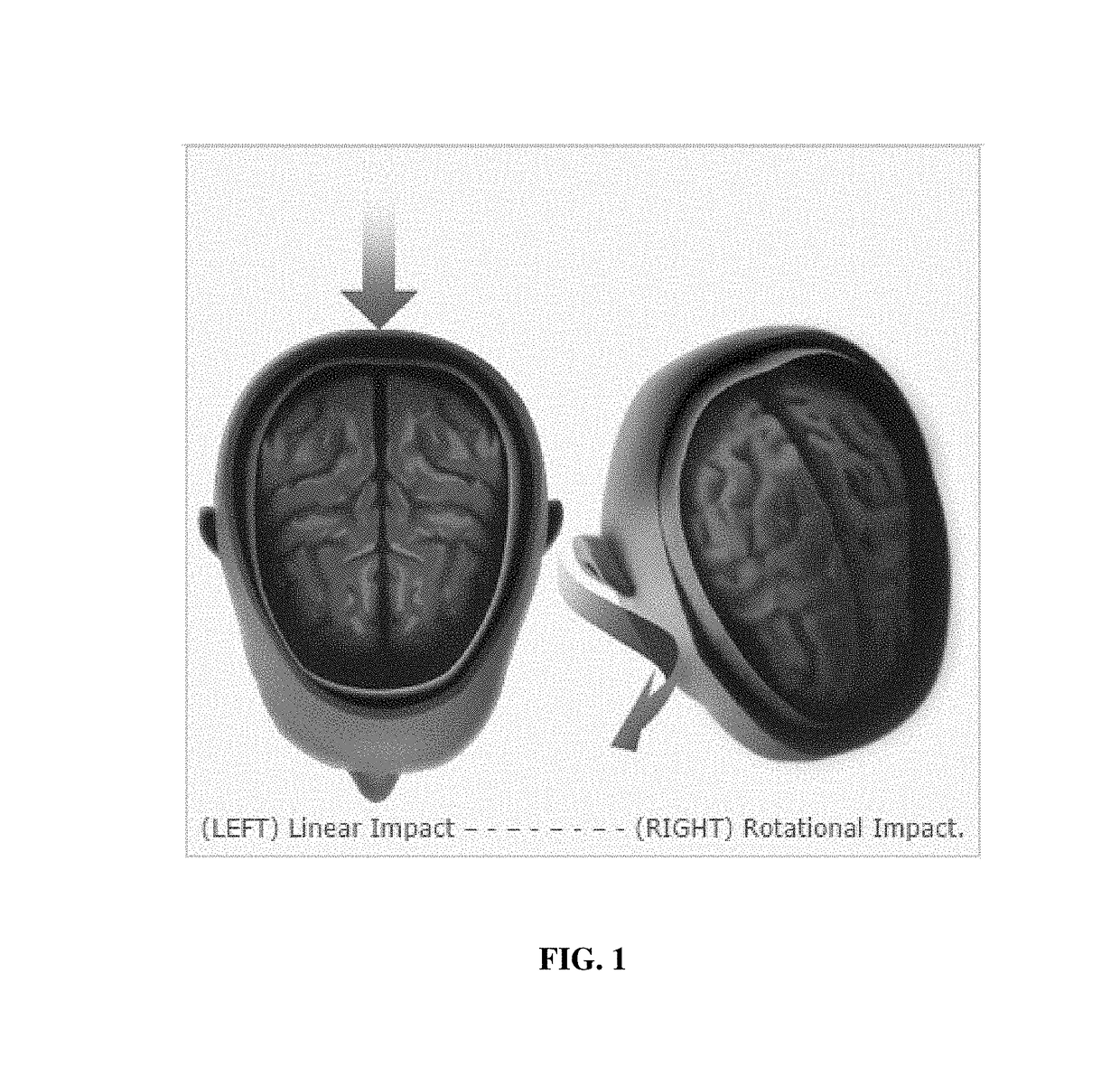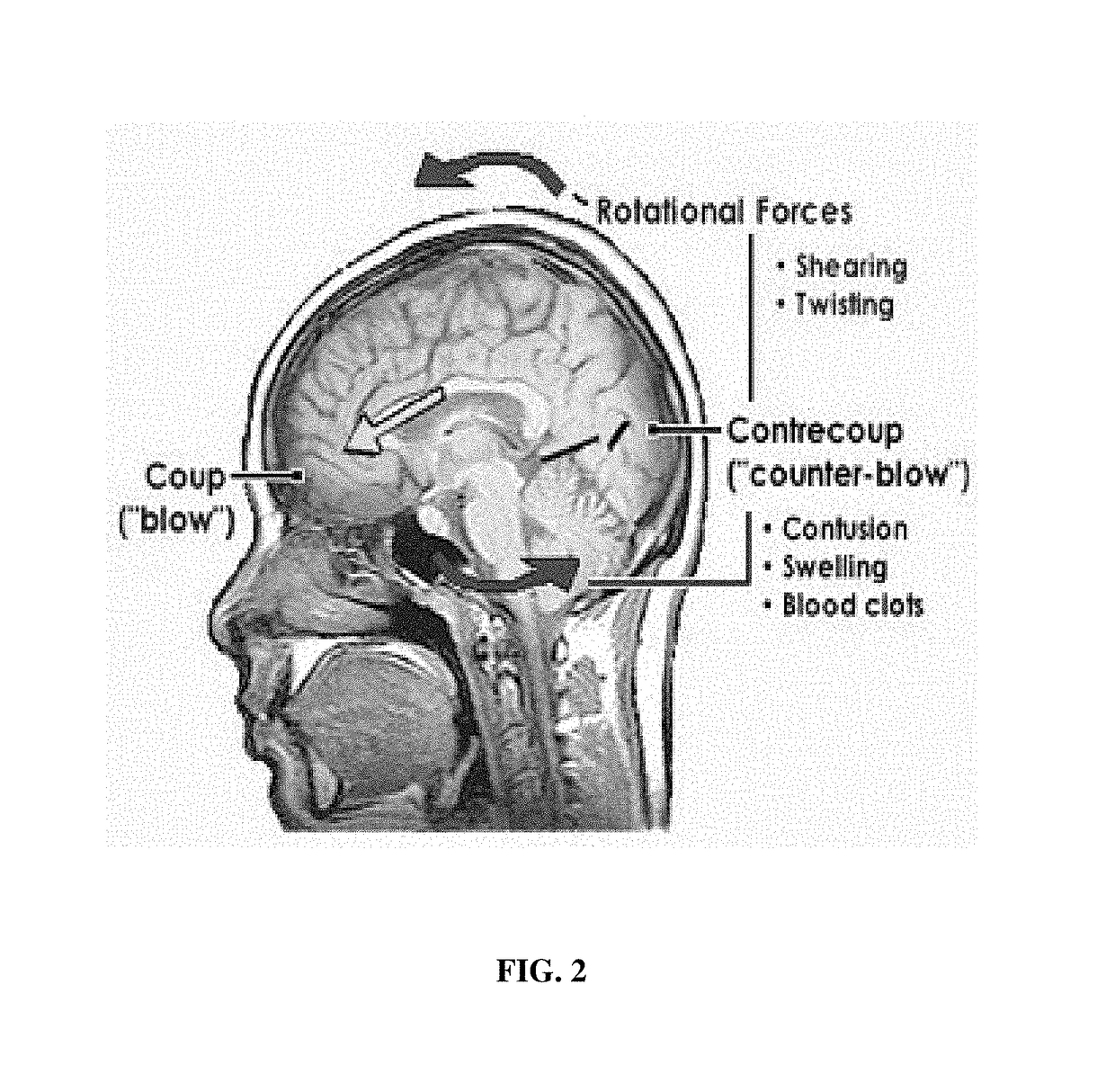Magnetic football helmet to reduce concussion injuries
a magnetic football and helmet technology, applied in the field of protective headwear, can solve the problems of nerve damage, brain bruising, blood vessel damage, etc., and achieve the effects of reducing impact force, reducing impact force, and slowing collision speed
- Summary
- Abstract
- Description
- Claims
- Application Information
AI Technical Summary
Benefits of technology
Problems solved by technology
Method used
Image
Examples
example 1
ng the Strength of Repulsive Forces
[0113]The strength of the repulsive force of these magnets, as it relates to distance was measured. Specifically, the repulsive force of two N52 disc magnets with like poles facing each other was determined at equal intervals, from the distance where repulsive forces can be detected to the point of near magnet contact.
[0114]FIGS. 7A-7D demonstrate how much repulsive force the magnets are able to exert at a given distance. Neodymium magnets (12) were fixed to a machine press (11) (see FIG. 7A) and like poles (N,N) were moved in increments of 0.25 inches toward each other. Force was measured in pounds with the use of an analog scale (13) that was placed beneath the lower magnet. Repulsive force generated in the one magnet system by the two opposed magnets 0.75 inches apart is approximately 40 lbs.
[0115]In FIGS. 7B-7C, the experimental design is the same, however, in the presence of two 3.5 mm polycarbonate sheets (14) placed between the magnets (this...
example 2
tion of Whether Magnets can Reduce Impact Forces
[0118]To determine whether these magnets can reduce impact forces generated at a site of impact, magnet(s) were first secured in wood blocks adapted to slide smoothly on bars holding 10 lb metal weights (see FIGS. 8A and 8B). The repulsive force is generated by 2-inch diameter N52 magnets (single magnets with like poles facing each other with individual magnets (16) embedded in wooden chucks (15) on the rig shown in FIGS. 8A and 8B). Repulsive force was measured for both 10 lb (a) and 50 lb (b) stationary weights (each metal bar equals 10 lbs). The space between the two blocks of wood is the distance needed between two magnets (black arrow) to lift the corresponding weight. FIG. 8C shows a photograph of Fuji Prescale films placed between the magnets impacted by a 10 lb weight dropped from 6, 12, or 24 inches in the absence or presence of magnets. The experimental paradigm is comparable to current methodologies used to certify helmet sa...
example 3
ation of the Extent to which Magnetic Repulsion Reduces Forces at Impact
[0120]Using the experimental rig shown in FIGS. 8A-8B, deceleration and impact forces were measured for the drop assay described above using an accelerator (Bruel and Kjaer 4533-B), which was mounted to the top of the moving weight, and attached to a hand-held analyzer (Bruel and Kjaer 2250). The accelerometer data was measured in m / s2 and peak acceleration converted into g forces. As shown in the graph of FIG. 9, the solid line illustrates the peak acceleration with no magnet (negative control), the line with square data points illustrates peak acceleration with 2 pairs of opposing neodymium magnets, and the line with circle data points demonstrates the peak acceleration with 2 opposing pairs of magnets separated by 2 sheets of 3.5 mm polycarbonate. Table 1 shows numerical data from which the FIG. 9 graph is derived.
[0121]
TABLE1Quantification of Force Reduction at Impact (g = number of g forces)Magnet with No M...
PUM
 Login to View More
Login to View More Abstract
Description
Claims
Application Information
 Login to View More
Login to View More - R&D
- Intellectual Property
- Life Sciences
- Materials
- Tech Scout
- Unparalleled Data Quality
- Higher Quality Content
- 60% Fewer Hallucinations
Browse by: Latest US Patents, China's latest patents, Technical Efficacy Thesaurus, Application Domain, Technology Topic, Popular Technical Reports.
© 2025 PatSnap. All rights reserved.Legal|Privacy policy|Modern Slavery Act Transparency Statement|Sitemap|About US| Contact US: help@patsnap.com



